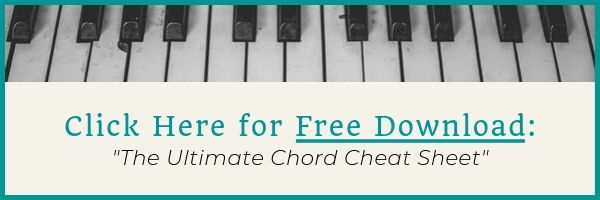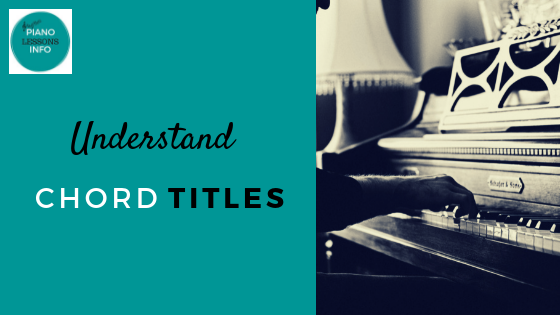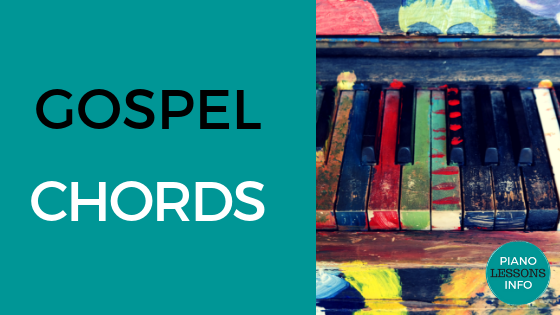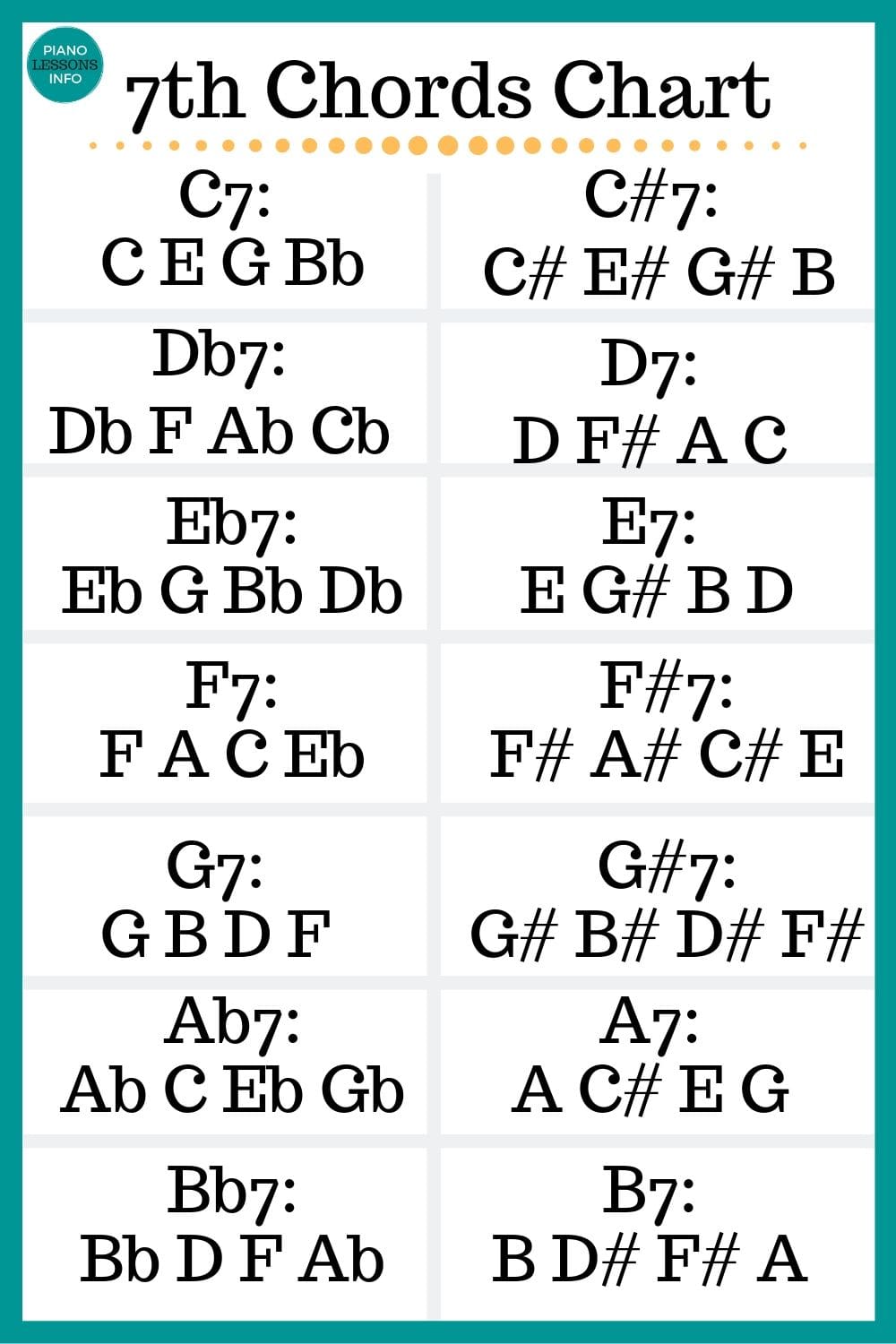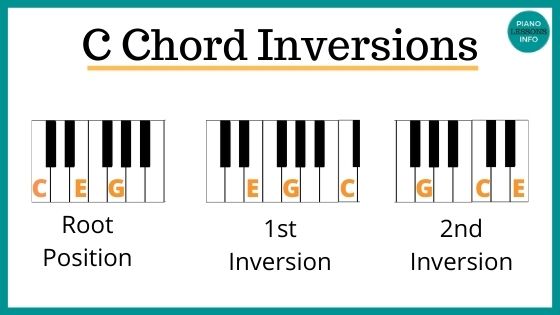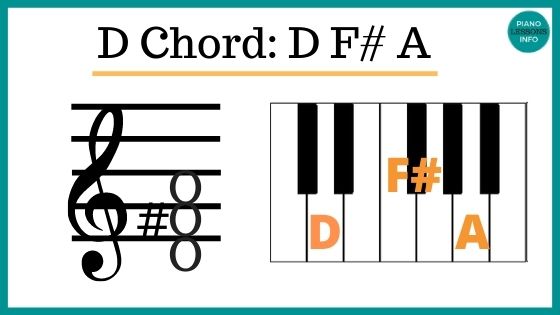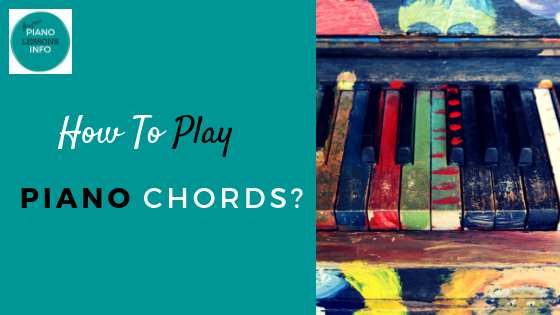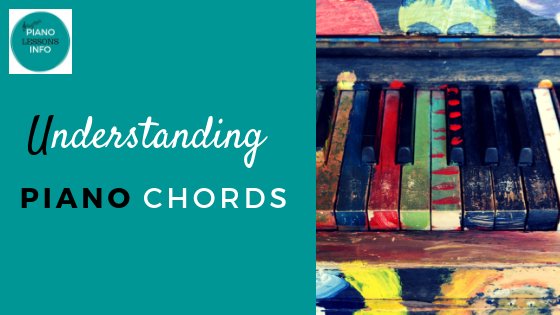Filling In Your Piano Chords
Top Tips & Techniques
If you're ready to start filling in your piano chords and working on creating music in those gaps and silences, I've got some great tips for you.
Here we're going to go through what you need to know in order to fill in your piano chords. This includes:
- where to get the notes from to fill in your chords
- what to do to start adding in those notes
- essentials you need to know in order to fill in with the correct notes
- how to work with melody
- and more!
I also have a mini course on this called Fantastic Fill Ins for Piano Chord. You can check that out here.
Let's get to it!
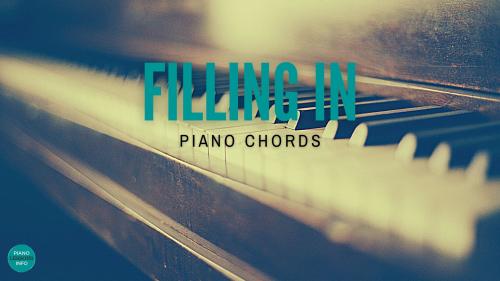
What Does it Mean to Fill In Chords?
When you play chords, you don't need to just play the chord - as in those specific notes of the chord - and be done. You can add more to you music.
This "more" can be a number of things.
- It can be melody
- It can be more notes from the chord
- It can be other notes from outside the chord
The main thing you want here is for it to sound good. Or at least not bad.
Often fills come in outside of the main beats or notes you're emphasizing. Think of it like adding in a few bits a pieces, a few accents, just a bit extra to make it all come together nicely.
Should You Learn Specific Riffs or Fills?
Sometimes people learn specific patterns - musical sentences - called riffs or fills.
Let's answer the "should" part of this question. Should you learn those? Well, I wouldn't put it that way. Can you learn these? Sure.
Do you need to learn riffs? I don't think so.
If you understand what to do in order to fill in your music, you don't need to learn and replicate specific patterns.
However, if you here something you really like or you really want to focus on jazz and blues, learning riffs or specific fills can be fun and helpful and even a "should do".
Video Tutorial: Filling In Piano Chords
First Thing You Need To Know to Fill In Chords
The very first thing you need to know in order to fill in your chords is where to get your notes. What this really means is you need to know your key.
In order to play fills, you need to know which scale, key, and black notes to play.
Lots of times the key is written out for the song you're playing. Or if you have a lead sheet, you can see the key signature.
If you're not sure how to find the key out, there are a few places you can go:
- If you only have chords - use the Free Ultimate Chord Cheat Sheet below to look at which chords are in which key. (There's a section on keys and the chords in those keys. Look there.)
- look at the Key Signatures page here.
Free Download:
Ultimate Chord Cheat Sheet

Subscribe below and get free access to the (printable) Ultimate Chord Cheat Sheet.
Know Your Key? Now Let's Get the Notes
Now that you know you're key, you're going to use the notes from that key (and that key only) to play your fills.
So if you're in the key of G, we're going to use the G scale for our fill in notes. Any note from this key will generally work. You just need to remember to play F# instead of F - that's in the key signature.
All major scales and their notes are listed here on the Major Scales page.
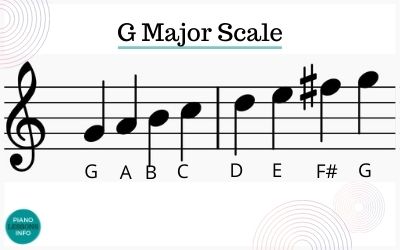 When playing in the key of G, you can use the notes from the G scale for filling in piano chords.
When playing in the key of G, you can use the notes from the G scale for filling in piano chords.An example:
Key: G
Chords for song: G, C, Em, D
For the G chord, fill in notes come from the G scale.
For the C chord here in this song, fill in notes come from the G scale.
For the D and Em chords here in this song, fill in notes come from the G scale.
So we're using that scale for them all.
Get Fill in Notes From The Chord
The other place you can find fill in notes is from your chord itself. You don't necessarily need to add in extra notes, you can pick a few of the chord notes out and play them.
If your chord is Em7, you can use all of those notes for the fill in notes. E, G, B and D.
What To Do To Fill Things In
What you're going to do now to fill in your chords is:
- Play your chord.
- Add in some notes from the key or the chord afterwards.
This can be one note or a couple.
If you're playing notes from the chord, you can play one, you can repeat the chord, you can play the chord broken (one note at a time), just pick out a few notes to play around the keyboard and just make stuff up.
We are definitely in the "make stuff up" phase of things now and you do have some structure to work with. You're going to play your chord and then play something from the key or chord.
Chords, Melody and Fill Ins
If you are playing chords and melody and you want to fill things in, just note that your melody needs to stand out more than your fills.
You can also use bits of melody for your inspiration for the fills.
Also, this is a good time to have something specific - a pattern or set of notes - you play to fill in. You can make a little riff that comes before the melody starts, before a chorus, after a verse, for the intro, something like that.
Take the Full Mini Course on Filling In Piano Chords
You now have the basics and a great place to start when filling in your chords.
To keep going and learn:
- ways to fill in with your left hand (including using arpeggios)
- finding fill in notes from around your chords
- intervals that sound great as fill ins
- intervals that sound terrible as fill ins
- how to transition between chords
- how to find more notes from around the keyboard
>>Take the Fantastic Fill Ins for Piano Chords course. <<
This course is part of the Piano Chords Club. (You can do the fills course within that time if it's the only course you're after.)
Recent Articles
-
Piano Notes Chart
Nov 20, 23 10:21 PM
Find a piano notes chart for treble clef and bass clef notes as well as the different types of notes. -
D Chord on Piano + Diagram, How To & Theory
Oct 24, 23 12:20 AM
Learn how to play the D chord on piano with diagram, fingering, D/A, D/F# and a theory explainer. -
Diminished Piano Chords: Chart & How to Make Them
Oct 09, 23 09:23 PM
Learn the different diminished piano chords and how to make them. Here you'll find both a diminished chord chart and an explanation.
Free Download:
Ultimate Chord Cheat Sheet

Subscribe below and get free access to the (printable) Ultimate Chord Cheat Sheet.

